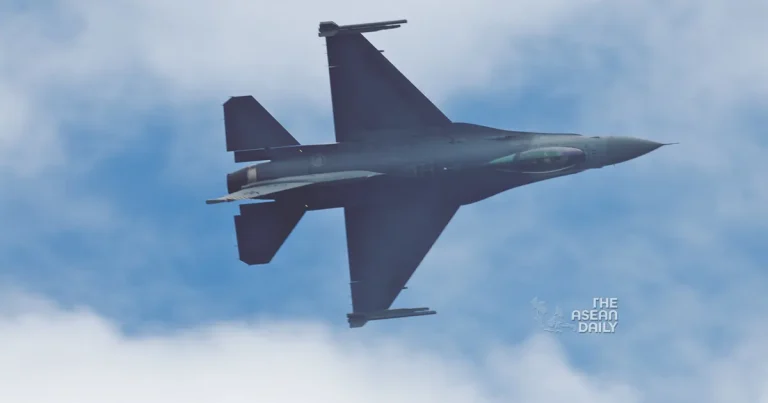8-5-2024 (SINGAPORE) An alarming incident unfolded at Tengah Air Base on Wednesday afternoon when a Republic of Singapore Air Force (RSAF) F-16 fighter jet encountered a critical malfunction shortly after taking to the skies. The aircraft, piloted by a seasoned aviator, faced an unspecified “issue” during the takeoff sequence at approximately 12:35 pm, prompting the Ministry of Defence (MINDEF) to swiftly respond.
In a statement released by MINDEF, it was confirmed that the pilot, exhibiting remarkable composure and adherence to stringent safety protocols, successfully ejected from the stricken aircraft. The ministry further assured that the aviator remained conscious and ambulatory, currently receiving thorough medical attention as a precautionary measure. Thankfully, no other personnel were harmed during this harrowing ordeal.
Defence Minister Ng Eng Hen provided a reassuring update, revealing that the pilot had not sustained any major injuries. “He is ambulant, conscious and talking. But as a precaution, (he) will stay in hospital for observation,” Dr Ng stated in a Facebook post, lauding the pilot’s alertness and strict adherence to safety procedures, which ultimately saved his life.
MINDEF has initiated a comprehensive investigation into the incident, pledging to provide timely updates as new information becomes available.
Singapore’s enduring relationship with the F-16 fighter jet spans nearly three decades, a testament to the nation’s unwavering commitment to maintaining a formidable aerial defense capability. However, this incident serves as a sobering reminder of the inherent risks associated with operating such advanced machinery.
The last time an RSAF fighter jet was involved in a catastrophic crash was a staggering 20 years ago, in May 2004, when an F-16C plummeted during a night training mission in the U.S. state of Arizona. Tragically, the 25-year-old Singaporean pilot, initially reported missing, lost his life in that incident. A subsequent board of inquiry attributed the crash to human factors, citing the possibility of gravity-induced loss of consciousness or spatial disorientation, which ultimately rendered the pilot incapable of recovering the aircraft from an inverted position.
While acknowledging the RSAF’s commendable safety record, Dr Ng expressed his disappointment over Wednesday’s incident, emphasizing that the ultimate goal must remain the complete eradication of such occurrences. “The goal for the RSAF must still be zero crashes,” he asserted. “Full investigations are underway to make sure all factors are identified and rectified decisively.”
In a proactive move to bolster its aerial prowess, Singapore’s F-16 fleet recently underwent a comprehensive upgrade, enhancing its capabilities and extending its operational readiness until the mid-2030s. These improvements encompass the integration of the Advanced Electronically Scanned Array Radar, enabling the F-16 to track and engage multiple targets from extended ranges, as well as an all-weather, ground-attack capability that equips the jet with the ability to strike targets with heightened precision.
Recognizing the need for long-term modernization, Singapore announced in February its intention to acquire eight F-35A jets from Lockheed Martin, complementing an earlier order for 12 F-35 jets of the “B” variant.




